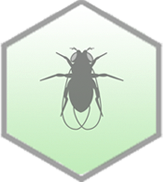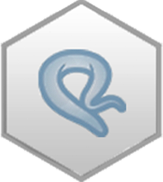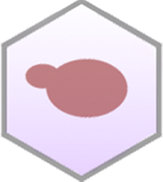GLN3 / YER040W Overview
- Standard Name
- GLN3 1
- Systematic Name
- YER040W
- SGD ID
- SGD:S000000842
- Feature Type
- ORF , Verified
- Description
- Transcriptional activator in nitrogen catabolite repression system; localization and activity regulated by quality of nitrogen source and Ure2p; full-length protein forms prion-like aggregates when overproduced 2 3 4
- Name Description
- GLutamiNe metabolism 1
- Comparative Info
-



Sequence
The S. cerevisiae Reference Genome sequence is derived from laboratory strain S288C. Download DNA or protein sequence, view genomic context and coordinates. Click "Sequence Details" to view all sequence information for this locus, including that for other strains.
Analyze Sequence
S288C only
BLASTN | BLASTP | Design Primers | Restriction Fragment Map | Restriction Fragment Sizes | Six-Frame Translation
S288C vs. other species
BLASTN vs. fungi | BLASTP at NCBI | BLASTP vs. fungi
S288C vs. other strains
Protein
Basic sequence-derived (length, molecular weight, isoelectric point) and experimentally-determined (median abundance, median absolute deviation) protein information. Click "Protein Details" for further information about the protein such as half-life, abundance, domains, domains shared with other proteins, protein sequence retrieval for various strains, physico-chemical properties, protein modification sites, and external identifiers for the protein.
- Length (a.a.)
- 730
- Mol. Weight (Da)
- 79401.0
- Isoelectric Point
- 10.2
- Median Abundance (molecules/cell)
- 1802 +/- 1135
- Half-life (hr)
- 5.7
Alleles
Curated mutant alleles for the specified gene, listed alphabetically. Click on the allele name to open the allele page. Click "SGD search" to view all alleles in search results.
View all GLN3 alleles in SGD search
Gene Ontology
GO Annotations consist of four mandatory components: a gene product, a term from one of the three Gene Ontology (GO) controlled vocabularies (Molecular Function, Biological Process, and Cellular Component), a reference, and an evidence code. SGD has manually curated and high-throughput GO Annotations, both derived from the literature, as well as computational, or predicted, annotations. Click "Gene Ontology Details" to view all GO information and evidence for this locus as well as biological processes it shares with other genes.
- Summary
- Sequence specific DNA-binding RNA polymerase II transcription factor involved in positive regulation of transcription by nitrogen catabolites; shuttles between the nucleus and cytoplasm
View computational annotations
Molecular Function
- Manually Curated
- enables DNA-binding transcription factor activity (IDA, IMP)
- enables RNA polymerase II cis-regulatory region sequence-specific DNA binding (IDA)
- enables sequence-specific DNA binding (HDA)
- enables zinc ion binding (RCA)
Biological Process
- Manually Curated
- involved in positive regulation of transcription by RNA polymerase II (IMP)
Phenotype
Phenotype annotations for a gene are curated single mutant phenotypes that require an observable (e.g., "cell shape"), a qualifier (e.g., "abnormal"), a mutant type (e.g., null), strain background, and a reference. In addition, annotations are classified as classical genetics or high-throughput (e.g., large scale survey, systematic mutation set). Whenever possible, allele information and additional details are provided. Click "Phenotype Details" to view all phenotype annotations and evidence for this locus as well as phenotypes it shares with other genes.
- Summary
- Non-essential gene in reference strain S288C; null mutation confers increased innate thermotolerance and abolishes pseudohyphal growth in diploids; overexpression causes slow growth
Classical Genetics
- null
- cell death: absent
- chemical compound accumulation: decreased
- chemical compound accumulation: increased
- chronological lifespan: increased
- colony appearance: abnormal
- innate thermotolerance: increased
- oxidative stress resistance: increased
- protein/peptide accumulation: decreased
- protein/peptide distribution: abnormal
- pseudohyphal growth: absent
- resistance to chemicals: increased
- overexpression
- null
- cell cycle progression in S phase: delayed
- chemical compound accumulation: abnormal
- chemical compound accumulation: decreased
- chemical compound accumulation: increased
- competitive fitness: decreased
- competitive fitness: increased
- desiccation resistance: decreased
- fermentative growth: decreased rate
- filamentous growth: decreased
- heat sensitivity: decreased
- heat sensitivity: increased
- invasive growth: absent
- metal resistance: decreased
- osmotic stress resistance: increased
- oxidative stress resistance: increased
- resistance to chemicals: decreased
- resistance to chemicals: increased
- resistance to chemicals: normal
- stress resistance: increased
- toxin resistance: decreased
- utilization of nitrogen source: decreased rate
- vegetative growth: decreased rate
- viable
- overexpression
- unspecified
Large-scale Survey
Interaction
Interaction annotations are curated by BioGRID and include physical or genetic interactions observed between at least two genes. An interaction annotation is composed of the interaction type, name of the interactor, assay type (e.g., Two-Hybrid), annotation type (e.g., manual or high-throughput), and a reference, as well as other experimental details. Click "Interaction Details" to view all interaction annotations and evidence for this locus, including an interaction visualization.
535 total interactions for 431 unique genes
Physical Interactions
- Affinity Capture-MS: 18
- Affinity Capture-RNA: 10
- Affinity Capture-Western: 5
- Biochemical Activity: 1
- Co-localization: 3
- PCA: 5
- Reconstituted Complex: 4
- Two-hybrid: 15
Genetic Interactions
- Dosage Rescue: 7
- Negative Genetic: 308
- Phenotypic Enhancement: 36
- Phenotypic Suppression: 15
- Positive Genetic: 78
- Synthetic Growth Defect: 13
- Synthetic Haploinsufficiency: 2
- Synthetic Lethality: 2
- Synthetic Rescue: 13
Regulation
The number of putative Regulators (genes that regulate it) and Targets (genes it regulates) for the given locus, based on experimental evidence. This evidence includes data generated through high-throughput techniques. Click "Regulation Details" to view all regulation annotations, shared GO enrichment among regulation Targets, and a regulator/target diagram for the locus.
- Summary
- GLN3 encodes a transcription factor that is a member of the C4 or GATA class. The transcriptional activators Gln3p and Gat1p and the repressors Dal80p and Gzf3p, all members of the GATA class with homologous zinc fingers, bind to the same core consensus sequence and collectively regulate the nitrogen catabolite repression (NCR) pathway, which controls a set of at least 90 genes required for uptake and utilization of different nitrogen sources. Transcription of GLN3 is constitutive, but Gln3p activity is tightly regulated via differential localization. During growth in rich nitrogen sources, Gln3p is phosphorylated by the TOR kinases Tor1p and Tor2p, facilitating its binding to Ure2p which sequesters Gln3p in the cytosol. When only poor nitrogen sources are available, Gln3p is dephosphorylated by the Sit4p phosphatase, causing its release from Ure2p and allowing its entry into the nucleus to activate transcription. Gln3p binding to the promoters of its target genes requires Gat1p. In addition, the four GATA factors interact with each other to form homodimers or multiple different heterodimers, allowing for fine-tuning of NCR regulation.
Expression
Expression data are derived from records contained in the Gene Expression Omnibus (GEO), and are first log2 transformed and normalized. Referenced datasets may contain one or more condition(s), and as a result there may be a greater number of conditions than datasets represented in a single clickable histogram bar. The histogram division at 0.0 separates the down-regulated (green) conditions and datasets from those that are up-regulated (red). Click "Expression Details" to view all expression annotations and details for this locus, including a visualization of genes that share a similar expression pattern.
Summary Paragraph
A summary of the locus, written by SGD Biocurators following a thorough review of the literature. Links to gene names and curated GO terms are included within the Summary Paragraphs.
Last Updated: 2005-09-29
Literature
All manually curated literature for the specified gene, organized into topics according to their relevance to the gene (Primary Literature, Additional Literature, or Review). Click "Literature Details" to view all literature information for this locus, including shared literature between genes.